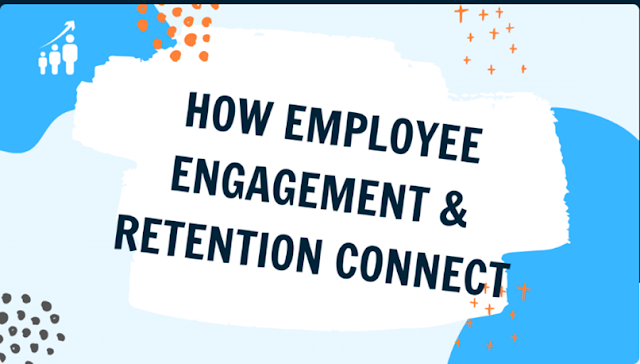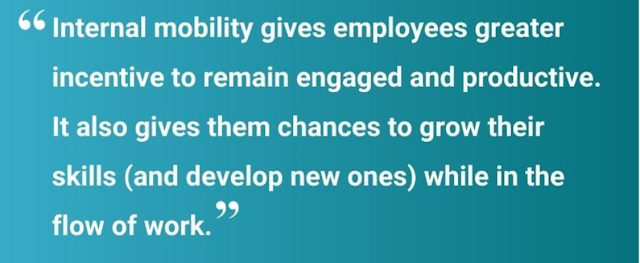Clandestine for Employee Engagement and Retention Strategies in a driven business organization !!!
"Employee engagement is the act
of creating a positive working environment in which employees feel willing and
able to perform their best work. This means that employee engagement is more
than just a happy or satisfied workforce. Whilst happiness is an important
factor in employee engagement, to create a truly engaged team, elements such as
communication, collaboration and wellbeing all need to be addressed to realize
ambitions"
Why is employee engagement
important?
Employee engagement is crucial for several reasons. Firstly,
engaged employees are more committed to their work and demonstrate higher
levels of productivity and performance. They are motivated to go above and
beyond, resulting in better outcomes for the organization.
Secondly, engaged employees are more likely to stay with the
company, reducing turnover rates and associated recruitment costs.
Thirdly, employee engagement fosters a positive work
environment, leading to higher morale, collaboration, and innovation. It
enhances job satisfaction and overall well-being, which in turn improves
employee retention and attracts top talent.
How does employee engagement impact
retention?
Employee
engagement has a significant impact on retention within an organization. When
employees are engaged, they develop a strong connection to their work and feel
valued and appreciated.
This sense
of fulfillment and purpose increases their overall job satisfaction, making
them more likely to stay with the company.
An engaged
employee is motivated to contribute their best efforts and go above and beyond
their job requirements. They feel a sense of loyalty and commitment to the
organization, which reduces their inclination to seek opportunities elsewhere.
some strategies to enhance engagement and
retain their employees ?
1. Clear Communication:
Transparent
communication between management and employees is essential.
2. Recognition and Rewards:
Acknowledge
and reward employees for their achievements and contributions.
3. Professional Development:
Offer
opportunities for employees to learn and grow within the organization.
4. Work-Life Balance:
Promote a
healthy work-life balance by encouraging employees to take breaks, use vacation
days, and avoid excessive overtime.
5. Wellness Programs:
Implement
wellness initiatives that focus on physical, mental, and emotional well-being.
6. Meaningful Work:
Ensure that
employees understand how their roles contribute to the overall success of the
company.
7. Opportunities for Advancement:
Provide a
clear career path for employees to progress within the organization.
8. Employee Involvement:
Involve
employees in decision-making processes that affect their work.
9. Team Building Activities:
Organize
team-building events and activities to strengthen relationships among
coworkers.
10. Competitive Compensation and Benefits:
Offer
competitive salaries and comprehensive benefits packages to attract and retain
top talent.
Conclusion
Implementing effective employee engagement and retention
strategies is crucial for the long-term success and growth of any organization.
By fostering a positive and inclusive work environment, offering opportunities
for skill development and advancement, and recognizing and rewarding employee
contributions, companies can create a culture that motivates and retains their
valuable talent. Regular communication, feedback loops, and open channels for
employee input are essential for maintaining engagement and addressing
concerns. Furthermore, a strong emphasis on work-life balance and well-being
initiatives demonstrates a commitment to employees' holistic satisfaction.
Ultimately, investing in employee engagement and retention not only boosts
morale and productivity but also contributes to a more stable and prosperous
future for the organization.
References
Tarique, I.,
& Schuler, R. S. (2017) Global talent management: Literature review,
integrative framework, andsuggestions for further research. Journal of World
Business, 45, 122-133. doi:10.1016/j.jwb.2017.09.019.
[2] Chew J.,
Girardi, A., & Entrekin, L. (2015) “Retaining core staff: the impact of
human resource practices organization commitment”, J. Comparat. Int. Manag.;
8(2):23-42
[3] Hay, M.
(2022) Strategies for survival in the war of talent. Career Development
International, 7, 52-55. Doi:10.1108/13620430210414883.
[4] Tims,
M., Bakker, A. B., & Xanthopoulou, D. (2021) Do transformational leaders
enhance their followers’ dailywork engagement? The Leadership Quarterly, 22,
121-131. doi:10.1016/j.leaqua.2021.12.011.
[5]
Schaufeli, W. B., Salanova, M., Gonzalez-Roma, V., & Bakker, A. B. (2022)
The measurement of engagement and burnout: A two sample confirmatory factor
analytic approach. Journal of Happiness Studies, 3, 71-92.
[6] May,
D.R. Gilson, R.L. and Harter, L.M. (2014) The psychological conditions of
meaningfulness, safety and availability and the engagement of the human spirit
at work. Journal of Occupational and Organizational Psychology.77, 11-37.




Relationships gaps between boss and staffs need to be curtailed for a successful journey.
ReplyDeleteThe discussion about maintaining effective employee participation in the growth of the organization is valuable
ReplyDelete